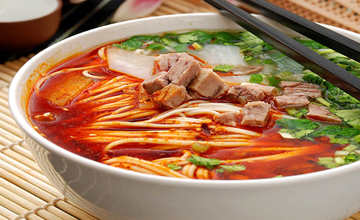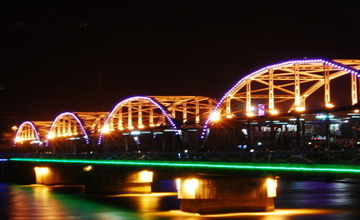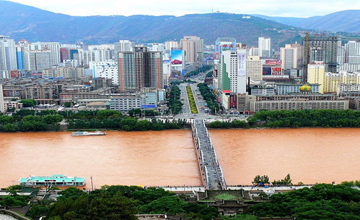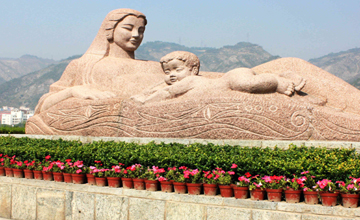The Introduction of Lanzhou
In and around Lanzhou are ancient Buddhist temple sites and shrines. Now, Lanzhou has a large Muslim minority of about 9% of the population. The city is an important transportation hub. The legacy of centuries of travel and trade on the Silk Road are the Bingling Temple Grottoes near Lanzhou and ancient temples and fortifications in the Hexi Corridor, and the modern city of Lanzhou offers the Gansu Provincial Museum as a travel highlight and modern facilities for a Silk Road tour.
What to Visit in Lanzhou?
One of the legacies of the Silk Road is the Bingling Temple (Thousand Buddha Caves) that are one and a half hours southwest of Lanzhou. The first frescoes were carved during the 4th or 5th centuries AD. Carving and excavating continued for about 1,000 years. There are more than a hundred caves and hundreds of carved figures. Some are quite big. A famous one is more than 27 meters tall and is similar in style to great Buddhas that were carved in Central Asia.
When you visit Lanzhou, you must visit the Yellow River Mother Sculpture; it is a granite-structured, full relief composed of a mother and a baby boy. The sculpture has reflected the Chinese people growing sturdily under the parenting of the Yellow River and the Chinese people's persevering spirit that makes the world go round.
Let's continue to visit, the Yellow River Steel Bridge ( Zhongshan Bridge ) is a famous landmark in Lanzhou, the scenery on both sides of the bank is quite fantastic, and it is also adjacent to the pedestrian street and snack street in Lanzhou. This steel bridge was built in 1907, which is known as the first bridge on the Yellow River.
Gansu Museum is also entirely worth to visit, "The Galloping Horse Treading on a Flying Swallow (Ma Ta Feiyan)" is treasured in the museum.
Lanzhou Beef Noodle:
Climate and Weather of Lanzhou:
Lanzhou has a temperate continental climate, and the annual average temperature is 10.3℃, and the annual average precipitation is 327 mm, mainly in June to September. There is no severe heat in summer and severe cold in winter, which is a famous summer resort in China. From April to October is the best time to visit Lanzhou.
Annual Temperature of the Year/℃ ( High-Low )
| Jan. | Feb. | Mar. | Apr. | May. | Jun. |
| -11~3℃ | -6 ~7℃ | 0~ 13℃ | 6~19℃ | 11~23℃ | 15~28℃ |
| Jul. | Aug. | Sept. | Oct. | Nov. | Dec. |
| 17~30℃ | 17~28℃ | 9~23℃ | 6~17℃ | -2~10℃ | -10~4℃ |
Geography of Lanzhou:
Lanzhou is located in the central part of Gansu Province, NW, China; bordering Wuwei and Baiyin to the north, Dingxi to the east, and Linxia to the south. The terrain of western and southern Lanzhou is relatively high, and the Yellow River flows from southwest to northeast, traversing the whole territory and cutting through mountains, forming a bead-shaped valley with canyons and basins alternately.
History of Lanzhou:
How to Get to Lanzhou:
There are two ways to get to Lanzhou: Flight, and Trains.







